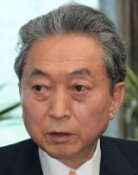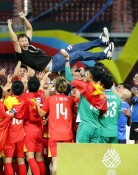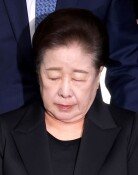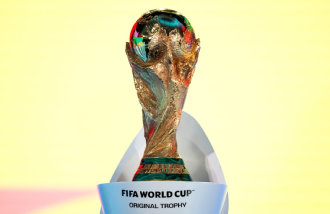Ssangyong Stays Afloat Despite Crisis
Ssangyong Stays Afloat Despite Crisis
Posted May. 22, 2010 08:22,
A year has passed since Ssangyong Motor`s crisis erupted May 21 last year, when its union went on strike to protest a layoff plan.
After 77 days of work stoppage and layoff of 514 workers, Ssangyong has rapidly turned around, posting 399.7 billion won (336.1 billion U.S. dollars) in sales over the first three months of this year from domestic sales of 6,593 vehicles and exports of 8,422 units.
First-quarter sales were up 132 percent from the same period a year ago. Last month, the company sold more than 7,000 cars, approaching its break-even point of 7,200 units. The operating production facility rate was 99 percent.
Ssangyongs militant union, which pushed the company to the brink of collapse, has had a change of face. After becoming the country`s first carmaker union to secede from the Korea Confederation of Trade Unions, the union saw its members pass the results of this years collective bargaining with a rate of 77.8 percent.
Despite the recovery of fundamentals and labor stability, many experts say the company needs to raise its competitiveness to stay afloat independently. The carmaker has lagged behind rivals in R&D capabilities after being sold to Chinas Shanghai Automotive Industry Corp., so Ssangyong urgently needs massive investment.
Ssangyong, however, can barely fund its operations by selling its real estate assets. It sold 99,000 square meters of land at an industrial park in Gyeonggi Province for 39 billion won (32.8 million dollars) at the end of last year and an additional 83,000 square meters of land for 39 billion won (30.3 million dollars).
Ssangyong unveiled its new sports utility vehicle Korando C at the Busan Motor Show last month. Though Ssangyong`s staff is pinning its hopes on the new vehicle, its release continues to be delayed due to the companys lack of funds for mass production.
The company has asked its main creditor Korea Development Bank to provide 100 billion won (84.1 million dollars) in new funds, but the bank insists that the sale of the carmaker comes first.
Ssangyongs independent survival depends on finding a new controlling shareholder capable of making steady large-scale investment until the company regains competitiveness.
While would-be buyers cannot be said to be better than Shanghai Automotive, Ssangyong Motor cannot afford to postpone its sale to find a better investor given the situation, said Kim Pil-soo, a professor of automotive engineering at Daelim College.
buddy@donga.com







